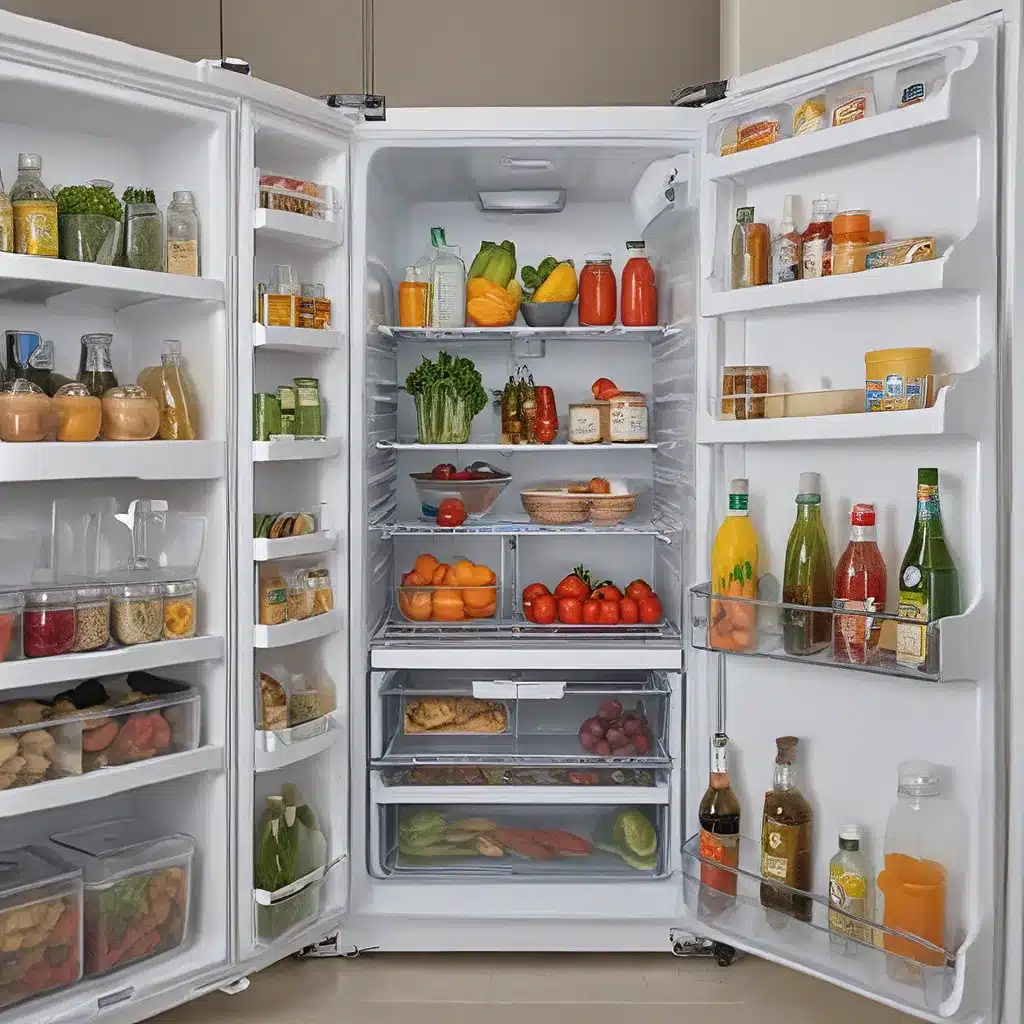As someone who takes pride in maintaining a clean and organized home, I know how important it is to keep our refrigerators in tip-top shape. After all, our fridges are the heart of our kitchens, where we store the food that nourishes our bodies and brings our families together. But did you know that a neglected fridge can be a breeding ground for all sorts of nasty germs and bacteria?
The Hidden Dangers of a Dirty Fridge
It’s easy to overlook the importance of fridge hygiene, but the reality is that those cold, dark spaces can harbor some seriously unpleasant surprises. According to the U.S. Food & Drug Administration (FDA), an estimated 1 in 6 Americans will get sick from food poisoning each year, and a significant portion of those cases can be traced back to cross-contamination in the kitchen.
Imagine this: you carefully prepare a delicious salad, only to have it ruined by the lingering remnants of last week’s spilled yogurt. Or worse, you unwittingly serve your loved ones a meal that’s been contaminated by dangerous bacteria, like Salmonella or E. coli, lurking in the corners of your fridge. Not only is this a potential health hazard, but it can also ruin the joy of cooking and gathering around the table.
The Four Steps to a Germ-Free Fridge
The good news is that keeping your refrigerator clean and hygienic doesn’t have to be a daunting task. By following the four simple steps outlined by the USDA and FDA, you can ensure that your fridge is a safe, bacteria-free zone:
-
Clean: Start by giving your fridge a thorough cleaning, both inside and out. Wipe down all the shelves, drawers, and door seals with a mild soap and water solution or a dedicated fridge-safe cleaning product. Don’t forget to remove and clean any removable parts, like glass shelves or crisper drawers.
-
Separate: Prevent cross-contamination by storing raw meats, poultry, and seafood on the bottom shelf, where any drips or spills won’t drip down onto ready-to-eat foods. Use separate cutting boards and utensils for raw and cooked items, and be sure to wash them thoroughly between uses.
-
Cook: When it comes to food safety, temperature is key. Always use a kitchen thermometer to ensure that your cooked dishes reach the proper internal temperature, which helps kill any harmful bacteria. If you’re not serving food immediately, keep it out of the “danger zone” between 40°F and 140°F by using a warming tray or slow cooker.
-
Chill: Finally, maintain the proper temperature in your fridge, keeping it at or below 40°F. This helps slow the growth of bacteria and prevents spoilage. Don’t forget to regularly check the temperature and adjust it as needed. And when it comes to leftovers, be sure to store them in airtight containers and consume them within 3-4 days.
Fridge Hacks for a Sparkling Clean Space
Now that you know the four key steps to a germ-free fridge, let’s dive into some practical tips and tricks to make the process even easier:
Establish a Cleaning Routine: Set aside a regular time, like once a week or once a month, to give your fridge a thorough cleaning. This will help you stay on top of any spills or grime before they have a chance to build up.
Use an Ice Scoop: One simple hack I learned from my restaurant days is to keep an ice scoop on hand for dispensing ice. This helps prevent the transfer of germs from hands directly into the ice bin. Be sure to wash the scoop regularly in the dishwasher to keep it sanitized.
Invest in Fridge Liners: Lining your fridge shelves with easy-to-clean mats or liners can make cleanup a breeze. When spills or drips occur, you can simply remove and wash the liners, rather than having to scrub down the entire shelf.
Tackle Tough Stains: For those stubborn food stains or dried-on gunk, try mixing a paste of baking soda and water. Let it sit for a few minutes before scrubbing, and you’ll be amazed at how effectively it tackles even the toughest messes.
Maintain Proper Storage: Proper food storage is key to preventing spoilage and cross-contamination. Always store raw meats on the bottom shelf, where any drips won’t contaminate other foods. Use airtight containers or resealable bags to keep items fresh and prevent odors from spreading.
The Benefits of a Germ-Free Fridge
By dedicating a little time and effort to keeping your fridge clean and organized, you’ll enjoy a host of benefits:
Improved Food Safety: A well-maintained fridge is less likely to harbor dangerous bacteria that can cause foodborne illnesses. This protects both you and your family from the unpleasant – and potentially serious – consequences of food poisoning.
Longer-Lasting Food: When your fridge is free of grime and odors, your food will stay fresher for longer. This means less wasted money and fewer trips to the grocery store.
Enhanced Flavor and Aroma: Have you ever noticed how a spill or leftover can linger in your fridge, tainting the flavor of other foods? A sparkling clean fridge helps preserve the natural flavors and aromas of your ingredients.
Peace of Mind: Perhaps most importantly, a hygienic fridge gives you the peace of mind of knowing that your kitchen is a safe and healthy environment for your loved ones. No more worrying about hidden germs or contaminants – just wholesome, delicious meals.
So, what are you waiting for? Grab your cleaning supplies and get to work on transforming your fridge into a germ-free oasis. Your taste buds – and your family’s well-being – will thank you.
Remember, for all your cleaning needs, be sure to check out the professional services offered by Adam Cleaning. With their expertise and attention to detail, you can rest assured that your home will be sparkling clean, from the fridge to the furthest corner.







